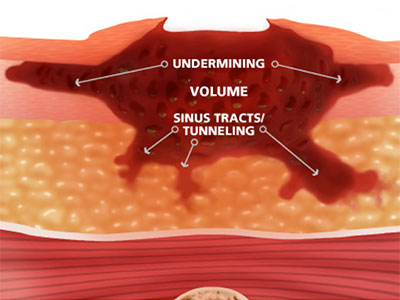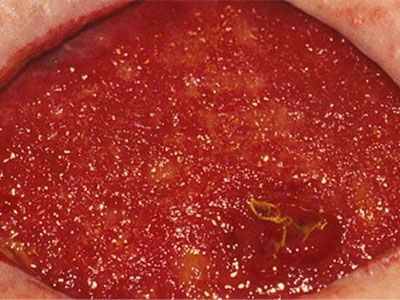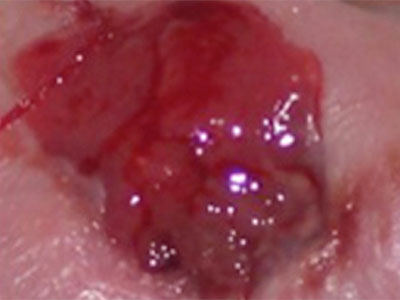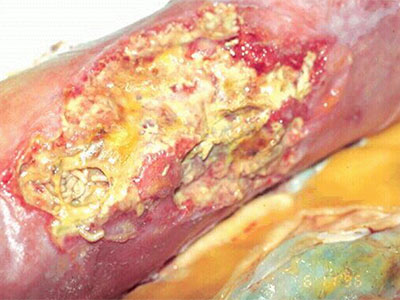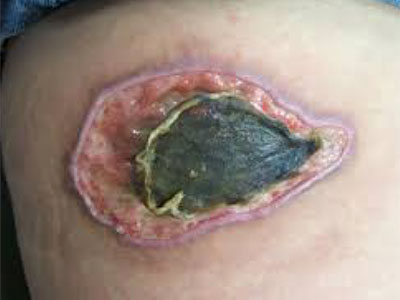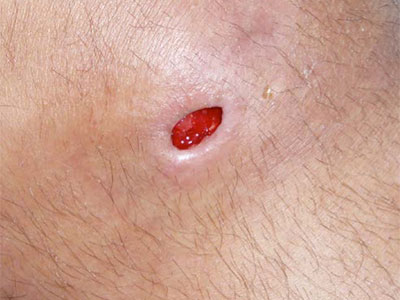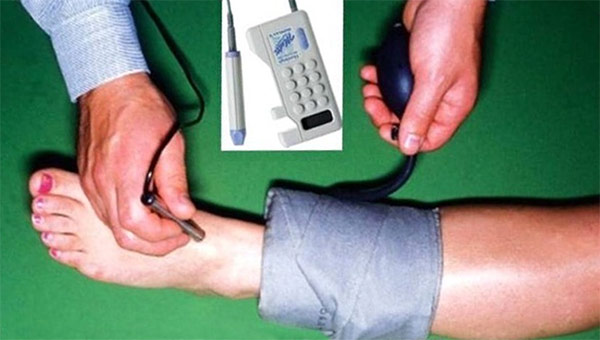Wound Care Product Resource Guide
High Absorbency Dressings
Wound Filler
Cost:
$$Description:
Pastes, granules, powders, beads, gels. Fills dead space in deep wound, may have some absorption depending on the product.
Brand Names/Examples:
Gold Dust (Southwest Technologies, Inc.)Indications
Full thickness wound with depth. Minimal to moderate exudate.Instructions
Cleanse wound, Apply directly to wound. Use proper secondary dressing. Change every 1-2 days.Considerations
Costly, limited availability.Hydrofiber
Cost:
$$Description:
Highly absorptive with reinforcing fibers throughout the dressing. Absorbs heavy exudate, converts to a gel when comes in contact with exudate. Keeps wound base moist.
Brand Names/Examples:
Aquacel (Conva-Tec), Durafiber (Smith & Nephew)Indications
Partial or full thickness wound with or without depth, moderate to heavily exudating wound.Instructions
Cleanse wound bed, place or gently pack into wound. Apply appropriate secondary dressing to secure. Change frequency depends on the amount of exudate, 1-3 days.Considerations
May leave fibers in the wound, not recommended for use in minimally draining tunnels or woundsFoam
Cost:
$$Description:
Absorptive and nonadherent, consists of hydrophilic polyurethane. Some have a border of adhesive material for securement, some need securement method added.
Brand Names/Examples:
Allevyn (Smith & Nephew), Optifoam (Medline)Indications
Partial or full thickness wound with (fillers) or without depth (sheets) moderate to heavily exudating wound. May be used for primary or secondary dressing.Instructions
Cleanse wound base and dry Place foam dressing, apply securement method if needed. Change 1-3 times a week or as needed. Change frequency depends on the amount of exudate.Considerations
Contraindicated in dry eschar, third degree burns. Not indicated for dry wounds, may macerate periwound.Calcium Alginate
Cost:
$$Description:
Polysaccharide derived from brown seaweed. Highly absorptive, forms into a gel when comes in contact with exudate.
Brand Names/Examples:
Algisite (Smith & Nephew), Restore CalciCare (Hollister)Indications
Partial or full thickness wound with or without depth, Moderate to heavily exudating.Instructions
Cleanse wound base and place or gently pack into wound. Apply secondary dressing to secure. Change as needed, 24-48 hours, usually requires a cover dressing.Considerations
Contraindicated in dry eschar, third degree burns, surgical implantation, heavy bleeding. Gel may have odor during dressing changes. May leave fibers in the wound. Contraindicated in dry tunnels.Low Absorbency Dressings
Composite
Cost:
$$Description:
Combination of two or more distinct products manufactured as a single dressing.
Brand Names/Examples:
Coversite (Smith & Nephew), Tegaderm + Pad (3M)Indications
Partial or full thickness wound, dry to heavily exudating, depending on composite dressing components may be primary or secondary dressing.Instructions
Cleanse wound base, dressing application depends on dressing components. Can function as primary or secondary dressing.Considerations
Can macerate tissue for heavily exudative wounds.Gauze
Cost:
$Description:
Manufactured in many forms: woven and non-woven, impregnanted and non-adherent.
Brand Names/Examples:
Indications
Full thickness, lightly exudating wound and non-viable wound base.Instructions
Cleanse wound, dry. Apply to the wound dry, cover with secondary dressing.Considerations
Must be changed daily, may leave fibers in wound bed, can stick to wound and damage viable tissue in wound.Moisture Adding Dressings
Hydrogel
Cost:
$$Description:
Maintains clean, moist wound. Non-adherent. Can come in gel, sheet, or impregnated gauze. Aides in autolytic debridement.
Brand Names/Examples:
Solosite Gel (Smith & Nephew), Skintegrity (Medline)Indications
Partial or full thickness wound, dry to minimally exudative wound.Instructions
Cleanse wound bed,dry. Apply to wound base, cover with appropriate secondary dressing. Change every 1-3 days.Considerations
May macerate a heavily exudating wound.Hydrocolloid
Cost:
$$Description:
Impermeable to environmental bacteria and other contaminants. Will form a gel when in contact with wound. Promotes autolysis and moist wound healing. Hydrophillic colloid particles bound to polyurethane foam.
Brand Names/Examples:
Duoderm (Conva-Tec), Replicare (Smith & Nephew)Indications
Primary or secondary dressing, Partial or full thickness wound. Minimal drainage. Avoid Infected wounds, dry eschar, arterial, neuropathic wounds.Instructions
Cleanse wound, dry. Dressing should be slightly larger than wound itself. Press dressing while applying to ensure it is touching the wound bed. Change every 3-5 days.Considerations
Not recommended for fragile skin,heavily draining wounds.Contact Layer
Cost:
$Description:
Non-adherent layer protects wound bed from direct contact with other agents and dressings. Porous and allows drainage to pass and medication to absorb through the contact layer.
Brand Names/Examples:
Adaptic (Systagenix), Xeroform (Kendall)Indications
Partial or full thickness wound with or without depth. Donor sites, split thickness skin graft.Instructions
Cleanse wound base, Apply directly to wound base. Use a cover dressing as needed.Considerations
Not recommended for tunneling wounds, third degree burns. Will not debride wound.Debridement Dressings
Enzymatic Debridement Ointment
Cost:
$$$Description:
Utilizes enzymes suspended in a petrolatum based ointment to debride non-viable tissue from a wound bed. Keeps wound moist.
Brand Names/Examples:
Collagenase (Santyl)Indications
Wound with nonviable tissue present. Dry to heavily exudating wound.Instructions
Cleanse wound, dry. Apply directly to the wound bed in a nickel-thick layer. Cover with a damp-end gauze to add moisture if needed. Secure with appropriate secondary dressing. Change daily.Considerations
Costly, must be done daily.Dakin’s Solution
Cost:
$Description:
Mixture of water and bleach available in varying strengths.
Brand Names/Examples:
Indications
For short term use used for debriding wounds with large amounts of non-viable tissue. Can be used for wounds with high bioburden and non-viable tissue as an anti-microbial.Instructions
Dampen gauze with Dakin's solution, place or gently pack into wound. Change 1 or 2 times daily. Use wound strength Dakin's solution (1/8 or 1/16 strength). Stop using once non-viable tissue is gone, usually limited to 7-10 days maximum.Considerations
Can damage periwound skin. Caustic. Not recommended use for extended amounts of time. Concentrations of Dakin's solution stronger than 1/8 strength will kill cells needed for tissue growth and repair.Cadexomer Iodine
Cost:
$$Description:
Ointment with slow release cadexomer iodine that kills bacteria including biofilms. Also can remove slough, absorb drainage.
Brand Names/Examples:
Iodosorb (Smith & Nephew)Indications
Wound with suspected biofilm, wound with slough. Full thickness wounds with or without depth.Instructions
Cleanse wound base, Apply ointment to wound bed, cover with proper cover dressing. Change every three days.Considerations
Not indicated for those with iodine allergy, those with thyroid disease. Must follow dosage instructions to avoid overdose. Contraindicated in dry eschar, third degree burns.Compression Dressings
UNNA’s Boot
Cost:
$$Description:
Wrap gauze bandage impregnated with zinc oxide, gelatin and some contain calamine. Forms a boot that supports the calf muscle pump action when walking.
Brand Names/Examples:
Vitality Medical, DeRoyalIndications
Compression therapy option for treatment of lower extremity edema. Can help treat superficial wounds on the lower extremity.Instructions
Cleanse legs and pat dry. Apply wrap according to manufacturer's guidelines. Change every 5-7 days. Applied by a trained professional.Considerations
Dressing can be uncomfortable for some patients. Contraindicated in patients with arterial insufficiency, uncompromised heart failure. Does not work properly if patient is not ambulatory.Multilayer Compression System
Cost:
$$Description:
2, 3, or 4 layers of bandages, each comprised of different materials used to obtain therapeutic compression of the legs. Available in modified compression levels. Some layers can absorb minimal to moderate amounts of exudate.
Brand Names/Examples:
Profore (Smith & Nephew), Coban 2 layer (3M)Indications
Edematous legs with or without wounds. May use in conjunction with other dressings used underneath the compression bandage.Instructions
Must obtain ABI prior to application. Cleanse legs, dry. May treat wound with appropriate dressing. Moisturize intact skin. Apply multilayer compression wrap according to manufacturer's guidelines. Should be applied by a trained professional.Considerations
Do not use for ABI less than 0.7. Only use modified compression for ABI between 0.5-0.7. Compression therapy can be uncomfortable for some patients. Contraindicated in patients with uncompensated heart failure.Skin Creams
Zinc Oxide
Cost:
$Description:
Thick cream with zinc oxide base. Provides thick coating that protects and has healing properties.
Brand Names/Examples:
Sensicare (ConvaTec), Calmoseptine (Calmoseptine, Inc.)Indications
Denudement without depth. Minimal exudate.Instructions
Cleanse wound, dry. Apply directly to wound with a thick coating. Reapply as needed. Clean off soiled cream as needed, not necessary to remove all the cream when cleaning area.Considerations
Can come off on bedding/clothing. Can be drying, is tenacious.Barrier Cream
Cost:
$Description:
Petrolatum-based ointment used as a barrier against moisture damage. Has emollients to help moisturize intact skin.






